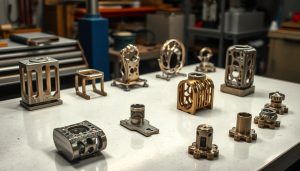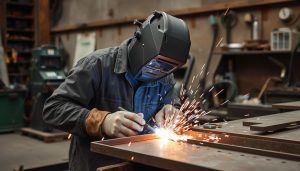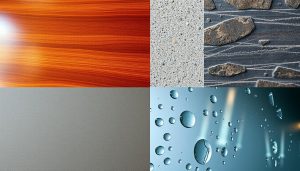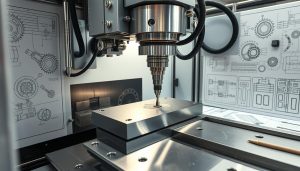In the world of metal manufacturing, the choice between low pressure and high pressure die casting can have a significant impact on a company’s bottom line. As manufacturers navigate the complexities of production, understanding the cost dynamics of these two distinct casting processes is crucial for informed decision-making.
What is Low Pressure Die Casting?
Low pressure die casting is a specialized metal casting process that offers numerous benefits for efficient and cost-effective manufacturing. This method is particularly well-suited for producing complex metal components with intricate designs and tight tolerances.
Overview of the Low Pressure Die Casting Process
In the low pressure die casting process, molten metal is forced into a mold cavity under low pressure, typically around 100 psi. This gentle pressure, in contrast to the high pressure used in traditional die casting, allows for more detailed and delicate parts to be produced. The metal is delivered through a sealed system, ensuring a clean and controlled environment for the casting.
Advantages of Low Pressure Die Casting for Efficiency
- Allows for the creation of complex, thin-walled, and intricate metal parts with high dimensional accuracy and surface quality.
- Reduces material waste and scrap rates, making it a more cost-effective manufacturing solution.
- Offers excellent low pressure die casting benefits in terms of efficient metal casting and energy efficiency, as the lower pressure requires less power to operate.
- Produces parts with superior mechanical properties, including strength and durability, due to the controlled solidification process.
By leveraging the advantages of low pressure die casting, manufacturers can achieve high-quality, cost-effective metal components that meet the demands of diverse industries, from automotive to electronics and beyond.
What is High Pressure Die Casting?
High pressure die casting is a highly efficient industrial casting method that offers numerous advantages for high-volume production. Unlike its low pressure counterpart, this process utilizes immense force to rapidly inject molten metal into a sealed, precision-engineered mold, creating complex parts with remarkable speed and consistency.
Overview of the High Pressure Die Casting Process
The high pressure die casting process begins with a hydraulic system that applies intense pressure, typically between 10,000 to 30,000 pounds per square inch, to force the molten metal into the die cavity. This rapid injection allows for the production of intricate, thin-walled components with remarkable detail and surface finish, making it an ideal choice for a wide range of applications.
Benefits of High Pressure Die Casting for High-Volume Production
- Increased production speed and efficiency compared to other casting methods
- Ability to create complex, high-precision parts with tight tolerances
- Consistent, high-quality results due to the controlled, automated process
- Suitability for mass production of components in industries like automotive, electronics, and consumer goods
The combination of speed, precision, and cost-effectiveness makes high pressure die casting a preferred choice for high-volume manufacturing and industrial casting methods across a wide range of sectors.
“High pressure die casting allows us to produce complex, high-quality parts with unparalleled efficiency and consistency, making it an essential tool for our mass production needs.”
– Jane Doe, Manufacturing Manager at ABC Industries
Cost Comparison: Low Pressure vs High Pressure Die Casting
When it comes to die casting, the choice between low pressure and high pressure methods can have a significant impact on your manufacturing expenses. Let’s dive into a detailed cost analysis to understand the key differences between these two processes.
Initial Equipment and Setup Costs
The initial investment required for low pressure die casting is generally lower than high pressure die casting. Low pressure systems typically use simpler, less expensive molds and equipment, making the startup costs more manageable for small to medium-sized operations. On the other hand, high pressure die casting requires specialized, high-precision machinery and tooling, resulting in a higher upfront investment.
Material Costs and Wastage Comparison
In terms of material costs, low pressure die casting often has an advantage. The process generates less scrap and waste, as the molten metal is gently pushed into the mold cavity, reducing material loss. High pressure die casting, while faster, can result in higher material waste due to the high-speed injection of metal into the mold.
| Metric | Low Pressure Die Casting | High Pressure Die Casting |
|---|---|---|
| Material Waste | Lower | Higher |
| Production Cycle Time | Longer | Faster |
| Initial Equipment Cost | Lower | Higher |
Labor and Operational Costs
When it comes to labor and operational costs, high pressure die casting may have an edge. The automated nature of the process often requires fewer workers, leading to lower labor costs. However, the ongoing maintenance and energy requirements of the high-pressure equipment can offset these savings, resulting in higher overall operational expenses.
Ultimately, the choice between low pressure and high pressure die casting depends on your specific manufacturing needs, production volume, and budget. A thorough die casting cost analysis can help you determine the most efficient and cost-effective solution for your business.

When to Choose Low Pressure Die Casting
In the world of manufacturing, the choice between low pressure die casting and high pressure die casting often comes down to the specific needs of the project. Low pressure die casting shines when it comes to producing complex shapes and handling low volume production runs. This unique casting method demonstrates remarkable material efficiency and reduced scrap rates, making it a highly attractive option for certain applications.
Best for Complex Shapes and Low Volume Production
The low pressure die casting process excels at creating intricate, detailed parts that would be difficult or even impossible to produce using traditional high pressure die casting techniques. This versatility makes low pressure die casting the go-to choice for complex part production, allowing manufacturers to bring their most ambitious designs to life.
Furthermore, low pressure die casting is particularly well-suited for low volume manufacturing needs. Unlike high pressure die casting, which is optimized for high-speed, high-volume production, the lower pressure and slower speeds of low pressure die casting make it a more economical option for smaller runs.
Material Efficiency and Reduced Scrap Rates
One of the standout advantages of low pressure die casting is its material efficiency. The gentle, controlled introduction of molten metal into the mold minimizes turbulence and air entrapment, resulting in a higher-quality casting with fewer imperfections and a lower scrap rate. This not only saves on material costs but also reduces the environmental impact of the manufacturing process.
By carefully considering the unique benefits of low pressure die casting, manufacturers can make informed decisions that optimize their production processes, reduce costs, and deliver high-quality, complex components to their customers.

When to Choose High Pressure Die Casting
High pressure die casting is the preferred choice when manufacturers require high volume production and strong cast parts. This rapid manufacturing process offers distinct advantages over its low pressure counterpart, making it the go-to solution for many industries.
Ideal for Mass Production and Strength Requirements
The high-speed nature of high pressure die casting allows for rapid manufacturing processes, enabling manufacturers to produce large quantities of parts efficiently. This makes it an excellent choice for applications that demand high-volume output, such as automotive components, consumer electronics, and hardware products.
Additionally, the high pressure applied during the casting process results in parts with superior strength and durability. This makes high pressure die casting the ideal solution for components that need to withstand significant stress and strain, such as those found in machinery, heavy equipment, and industrial applications.
Higher Speed and Volume with Higher Costs
- High pressure die casting can achieve faster cycle times and higher production volumes compared to low pressure methods.
- However, the increased equipment and energy costs associated with high pressure die casting must be taken into consideration.
- Manufacturers must weigh the tradeoffs between speed, volume, and cost to determine the most suitable die casting process for their specific needs.
“High pressure die casting is the go-to solution for manufacturers who require rapid, high-volume production of strong, durable parts.”
Shixinproto’s Die Casting Services for Precision and Cost Efficiency
At Shixinproto, we understand the critical balance between precision manufacturing and cost-efficient production. That’s why we offer a comprehensive range of custom die casting services, catering to the diverse needs of our clients across industries.
Low and High Pressure Die Casting Services for Every Production Need
Whether your project demands intricate designs or high-volume output, Shixinproto is equipped to handle it all. Our state-of-the-art facilities and experienced team of experts specialize in both low and high pressure die casting techniques, ensuring that we can deliver the perfect solution for your specific requirements.
From prototyping to full-scale production, our custom die casting services are designed to provide unparalleled precision and cost-efficiency. By leveraging the latest advancements in manufacturing technology, we are able to minimize waste, reduce lead times, and deliver exceptional quality every time.





